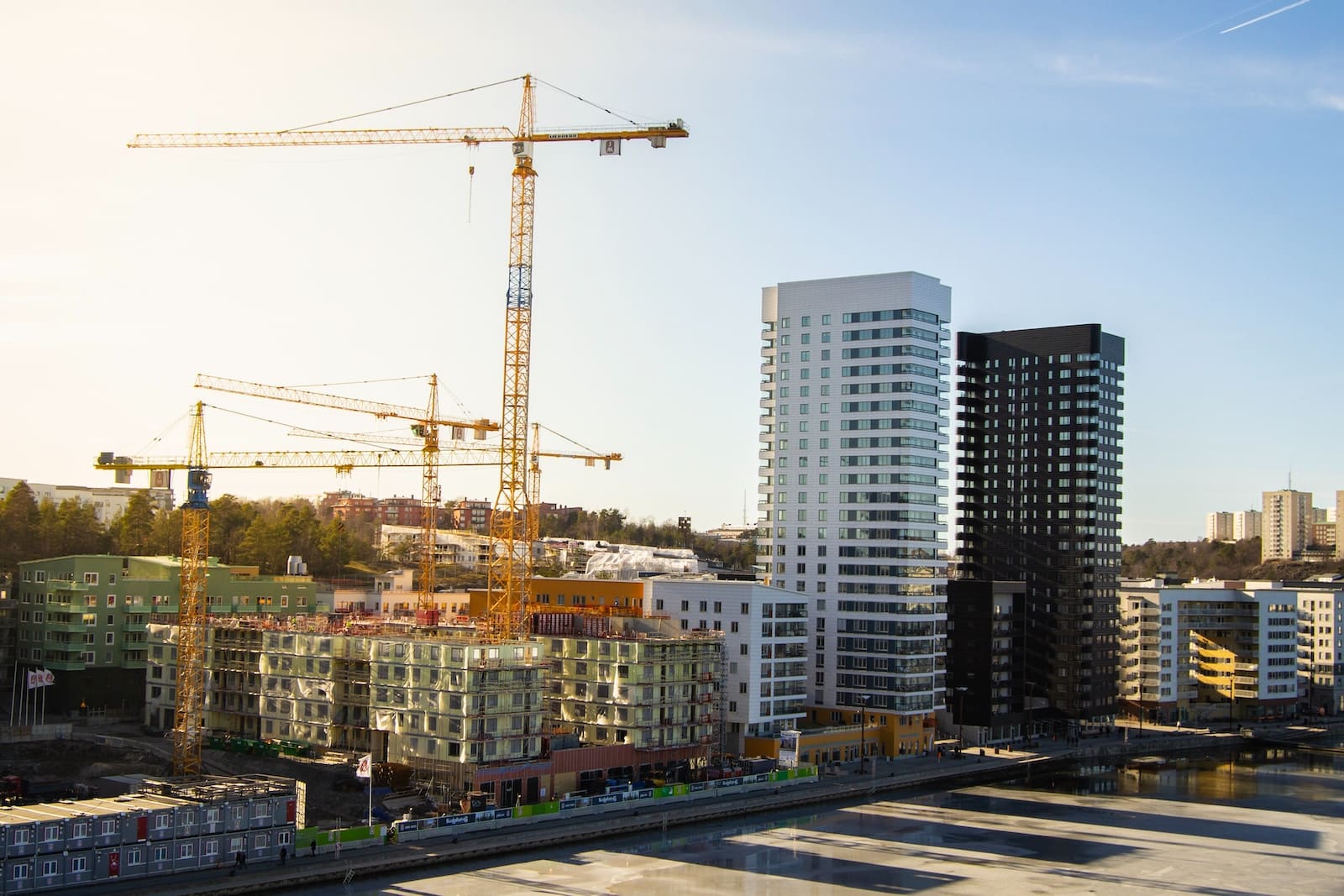Tips for successful land development projects

 |
November 27, 2023
|
November 27, 2023
The landscape of real estate development is complex and multifaceted, offering both significant opportunities and considerable risks. Whether you’re a seasoned estate developer or stepping into the arena for the first time, understanding the intricacies of land development can be the difference between a successful project and an underwhelming foray. At its core, successful land development hinges on meticulous planning, keen market insight, and the ability to navigate the regulatory environment. This article unlocks the secrets of prosperous development projects, equipping you with knowledge to transform raw land into a thriving hub of activity.
Understanding the Development Process
Development process is the crux of transforming a concept into a tangible asset. It’s a multifaceted journey that requires the coordination of numerous stakeholders, each with their unique expertise. A successful development project begins long before any construction equipment arrives on site. It starts with a vision and a strategic plan that considers the market demands, zoning laws, environmental concerns, and the overall economic landscape.
A voir aussi : Real estate crowdfunding: risks and rewards
Market Analysis
Before committing resources to a project, savvy developers conduct a rigorous analysis of the local real estate market. This entails understanding current demand, forecasting future trends, and identifying the ideal target demographic for the property. A holistic market evaluation informs decisions about the design, pricing, and marketing of the final development, optimizing its appeal and profitability.
Site Selection and Acquisition
Choosing the right site is pivotal. It involves evaluating the potential of various parcels of land, considering factors like location, accessibility, topography, and existing infrastructure. Once you’ve identified an optimal site, the acquisition process can begin, which often involves negotiations, due diligence, and securing the necessary financing.
Dans le meme genre : How to use 3d printing technology in real estate development?
Planning and Zoning
Every piece of land comes with its set of zoning regulations that dictate its use. Navigating these regulations is a critical step in the development process. It may require rezoning applications, community consultations, and environmental assessments. The goal is to achieve a design that meets regulatory requirements while still fulfilling the project’s vision.
Design and Engineering
Development design is where creativity meets practicality. Architects, civil engineers, and planners collaborate to create a layout that is both aesthetically pleasing and functionally sound. This stage involves creating detailed plans, securing approvals, and making any necessary adjustments based on feedback from stakeholders and regulatory bodies.
Construction and Project Management
With plans in place, the actual construction phase begins. It’s a time-intensive stage that requires diligent project management to ensure that timelines are met, budgets are maintained, and quality standards are upheld. Good project managers act as the glue that holds the entire development process together, steering the project through to completion.
By understanding these stages and the importance of each, you set a solid foundation for your land development endeavor. Remember, the development process is intricate and demands attention to detail, but with the right approach, it can lead to a highly successful real estate venture.
The Role of the Developer
In the world of estate development, the developer is a linchpin. They are visionaries who see beyond the present condition of a parcel of land to its ultimate potential. Developers are responsible for orchestrating the trajectory of the development project, from the initial concept to the finished product.
Vision and Strategy
Developers must possess an entrepreneurial spirit, combining innovation with strategic acumen. They set the direction for the project, defining the vision that guides all subsequent decision-making. A strong, clear vision supported by a robust strategy can serve as a North Star, helping the development team navigate challenges and stay aligned with the project’s goals.
Financing and Investment
A significant part of a developer’s role is securing the necessary financing to bring a development project to life. This requires a mix of skill in financial modeling, investment sourcing, and negotiation. Developers must convince investors of the project’s viability and potential for return on investment while also managing the financial risks inherent in any real estate endeavor.
Collaboration and Leadership
Development is not a solo sport. A developer must be an effective leader, capable of assembling and guiding a team of professionals. They collaborate with architects, engineers, contractors, and various consultants to ensure that each aspect of the project aligns with the overall vision. Effective communication and leadership are essential for maintaining a cohesive team and a smooth development process.
Risk Management
Developers are constantly balancing the potential for profit against the risk of loss. Risk management is a critical component of their role, requiring them to anticipate issues, mitigate challenges, and ensure the project’s adaptability to changing conditions. By conducting thorough due diligence and maintaining a proactive stance, developers can minimize risks and navigate the uncertainties of the real estate market.
A developer’s role is as challenging as it is rewarding, requiring a blend of creativity, management skill, financial acumen, and tenacity. By understanding and embracing this multifaceted role, developers can lead their teams to create successful real estate properties that stand the test of time.
Key Elements of Design and Development
The development design process is where form meets function, aesthetics meet economics, and vision meets reality. It is the blueprint of a development project, shaping how the land will be used and what it will eventually become. A well-executed design can differentiate a property in a crowded market and is a hallmark of a successful real estate development.
Integrating with the Environment
Today’s developers understand that harmonizing with the natural environment is not only an ethical imperative but also a marketable asset. Thoughtful design incorporates environmental sustainability, using resources efficiently, and minimizing the ecological footprint of the development. This includes considerations for green spaces, energy efficiency, and water management.
Aesthetic and Functional Design
A property that is pleasing to the eye and functional in its layout has a better chance of attracting tenants and buyers. Estate developers now focus on creating spaces that cater to the needs and desires of the end-user, whether it’s a residential, commercial, or mixed-use development. This means considering the flow of human traffic, natural light, communal areas, and privacy in the overall design.
Flexibility and Adaptability
The only constant in real estate is change. As such, designs need to be flexible and adaptable to accommodate future growth or changes in use. Developers and architects work together to create spaces that can evolve over time, ensuring that the property remains relevant and valuable in the face of shifting market dynamics.
Technological Integration
In an age where technology is ever-present, incorporating smart design is becoming a standard. From automation systems to high-speed connectivity, modern developments are designed to support the technology that businesses and individuals rely on daily.
By focusing on these key elements of design and development, developers can create properties that are not only successful in the short term but also sustainable and adaptable for years to come.
Navigating Zoning and Regulatory Hurdles
One of the most challenging aspects of land development is dealing with zoning and other regulatory requirements. These can vary greatly from one municipality to another and can significantly impact the scope and design of a project.
Understanding Local Zoning Laws
Zoning laws dictate what can and cannot be built on a particular piece of land. They govern aspects such as building height, density, and land use. Developers must have a thorough understanding of these laws and how they apply to their project. In some cases, it may be necessary to apply for variances or rezoning, which can be a complex and time-consuming process.
Engaging with the Community
Community engagement is an essential part of the regulatory process. Successful developers know the value of building relationships with local stakeholders and actively involving them in the planning process. This can help to alleviate concerns, garner support, and ultimately smooth the path for regulatory approvals.
Environmental Considerations
Environmental regulations are designed to protect natural resources and ensure sustainable development practices. Developers must conduct environmental assessments and ensure that their projects comply with these regulations. Failing to do so can result in costly delays and legal challenges.
Navigating the Approval Process
Securing the necessary permits and approvals is often a lengthy process that requires patience and persistence. Developers must be prepared to work closely with local planning departments, make revisions to their plans, and sometimes engage in negotiations to move their projects forward.
By understanding and proactively managing zoning and regulatory issues, developers can avoid common pitfalls and keep their projects on track.
Engaging the Right Team for Success
Behind every successful real estate project is a team of skilled professionals. Assembling the right team is critical to the success of any development project. Each team member brings a unique set of skills and insights that, when combined, create a powerful force capable of overcoming the challenges inherent in land development.
Selecting a Capable Project Manager
A skilled project manager is worth their weight in gold. They keep the project on schedule, within budget, and ensure that all team members are collaborating effectively. Their ability to anticipate problems and implement solutions is vital to the success of the project.
Building a Cross-Disciplinary Team
The complexity of land development requires a cross-disciplinary team that includes architects, civil engineers, environmental consultants, legal experts, and more. Each professional contributes a piece of the puzzle, and it’s the developer’s job to bring these pieces together in a cohesive manner.
Embracing Collaboration and Innovation
In today’s fast-paced and ever-changing real estate market, collaboration and innovation are key. Team members must be willing to work together, sharing ideas and expertise to create the best possible outcome. Developers should foster an environment where creativity is encouraged, and innovative solutions are explored.
Committing to Continuous Learning
The real estate industry is constantly evolving, with new trends, technologies, and regulations emerging all the time. A successful development team commits to continuous learning and development to stay ahead of the curve and ensure their projects meet the highest standards.
By engaging the right team and fostering a culture of collaboration, innovation, and continuous learning, developers can steer their projects to success.
Conclusion
In the realm of real estate development, turning raw land into a profitable and sustainable asset requires expertise, foresight, and a healthy tolerance for risk. The journey from concept to completion is fraught with challenges, but with the right approach, land development can be an incredibly rewarding endeavor. Remember, a successful real estate developer does not work in isolation but is the conductor of an orchestra, harmonizing the various elements of planning, design, finance, regulation, and construction.
To thrive in the field of land development, one must be both a visionary and a pragmatist, capable of dreaming big while navigating the complex terrain of the development process. Engage with the market, understand the site, collaborate with a skilled team, design with intention, and manage the project with precision. Keep abreast of zoning and environmental regulations and embrace the community’s concerns. If you can master these aspects, the development projects you embark on stand a far greater chance of not just succeeding, but also contributing positively to the built environment and the community at large.
So, if you’re looking to make your mark in the world of estate development, take these tips to heart, and forge ahead with confidence. The road to successful land development is paved with challenges, but for those with the passion and perseverance, it is also lined with opportunity. Remember, success in this field is not just about building structures—it’s about creating spaces where life unfolds, businesses prosper, and communities thrive.
